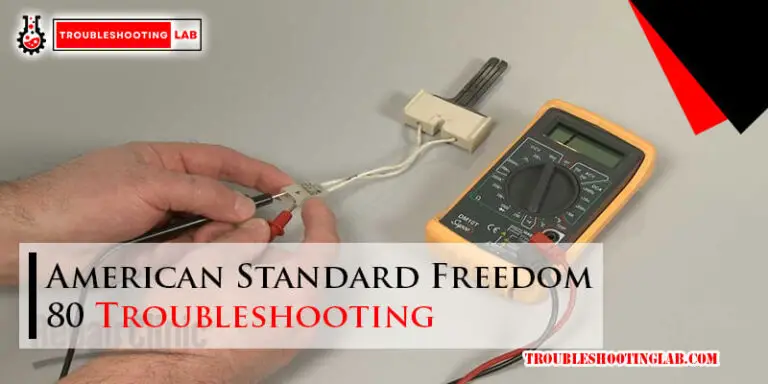Zebra Printers Troubleshooting: Unlock the Secrets to Perfect Printer Performance
Experiencing issues with your Zebra printer? Troubleshoot by checking connections and clearing paper jams.
Zebra printers are known for their efficiency and reliability in producing high-quality prints. However, occasional technical glitches may interfere with the smooth operation of these devices. If you’re facing issues with your Zebra printer, it’s essential to address them promptly to minimize disruption to your workflow.
This comprehensive guide will walk you through common problems and provide effective troubleshooting tips to resolve them. Whether it’s issues with print quality, connectivity, or error messages, we’ve got you covered. With the right steps, you can quickly identify and fix the problem, ensuring your Zebra printer continues to deliver exceptional results.

Common Zebra Printer Issues
Printer Not Powering On
If your Zebra printer is not powering on, there are a few common issues to check:
- Ensure that the power cable is properly connected to the printer and the power source.
- Check the power outlet to ensure it is working by plugging in another device.
- Inspect the power cord for any visible damage or wear and tear.
- If the printer still does not power on, try connecting it to a different power outlet.
Printing Quality Issues
When you are experiencing printing quality issues with your Zebra printer, consider the following troubleshooting steps:
- Check the printhead for any debris or residue that may be affecting print quality; clean it if necessary.
- Verify that the label media is loaded properly and is compatible with the printer.
- Ensure that the printhead pressure and speed settings are configured correctly for the label media being used.
- Inspect the printer’s ribbon for any damage or wrinkles, as these can impact printing quality.
Paper Jams And Feeding Problems
When dealing with paper jams and feeding problems, follow these steps to resolve the issue:
- Open the printer and carefully remove any jammed paper, taking care not to tear it during the process.
- Ensure that the label media is loaded straight and is not caught on any obstructions within the printer.
- Clean the printer’s rollers to prevent feed issues, as dirt and debris can impact feeding performance.
- Inspect the printer’s sensors to ensure they are functioning properly and not obstructed by any foreign objects.
Troubleshooting Steps
When troubleshooting issues with your Zebra printer, following specific steps can help identify and resolve problems efficiently. Below are essential troubleshooting steps to address common issues with Zebra printers.
Check Power Connection And Cables
- Ensure the power cable is securely connected to the printer and power outlet.
- Check for any visible damage to the power cable that may affect connectivity.
- Try plugging the printer into a different power outlet to rule out power supply issues.
Calibrate And Clean The Print Head
- Access the printer settings menu and locate the option to calibrate the print head.
- Follow the on-screen instructions to calibrate the print head for optimal performance.
- Clean the print head using a lint-free cloth and specialized cleaning solution if required.
Inspect And Clean The Printer Rollers
Regular maintenance of the printer rollers is vital for consistent print quality.
| Steps to Clean Printer Rollers | Frequency |
|---|---|
| Inspect rollers for debris or adhesive build-up. | Weekly |
| Clean rollers using a mild soap solution and a lint-free cloth. | When needed |
Software And Driver Optimization
When it comes to troubleshooting Zebra printers, one area that you cannot overlook is software and driver optimization. Ensuring that your printer’s software and drivers are up to date and optimized can greatly improve its performance and print quality. In this blog post, we will explore two key aspects of software and driver optimization: updating printer drivers and firmware, and optimizing printer settings for quality and speed.
Update Printer Drivers And Firmware
Keeping your printer drivers and firmware updated is crucial to maintain optimal performance and compatibility with your computer system. Outdated drivers and firmware can lead to various issues, such as print errors, slow performance, and connectivity problems. To update printer drivers and firmware:
- Visit the official website of Zebra Technologies or the manufacturer’s website of your specific printer model.
- Locate the “Support” or “Downloads” section of the website.
- Enter your printer model number or select it from the provided list.
- Download the latest printer drivers and firmware for your printer model and operating system.
- Follow the installation instructions provided by the manufacturer to update the drivers and firmware.
- Restart your computer and printer after the update process is complete.
Optimize Printer Settings For Quality And Speed
Adjusting printer settings can make a significant difference in the quality and speed of your prints. Here are some optimization tips:
- Quality Setting: Choose the appropriate quality setting based on your printing needs. Higher quality settings produce more detailed prints but may take longer to complete.
- Print Density: Adjust the print density to achieve your desired darkness or lightness of the prints. Experiment with different levels to find the optimal setting.
- Print Speed: Consider adjusting the print speed based on the urgency of your print jobs. Lower speeds can result in better print quality, while higher speeds may sacrifice some detail.
- Paper Type and Size: Ensure that you have selected the correct paper type and size in the printer settings to avoid paper jams and improper alignment.
- Maintenance Settings: Regularly perform maintenance tasks such as printhead cleaning and calibration to ensure consistent print quality and prevent potential issues.
By following these software and driver optimization techniques, you can troubleshoot common problems and improve the overall performance of your Zebra printer. Regularly updating drivers and firmware, as well as optimizing printer settings, will help you achieve high-quality prints and smooth operations.
Maintenance Best Practices
Proper maintenance is essential for keeping your Zebra printer running smoothly and ensuring high-quality prints. By regularly cleaning and inspecting your printer, properly loading media and ribbons, and replacing worn-out printer parts, you can minimize downtime and maximize efficiency. In this section, we will explore these maintenance best practices in detail.
Regular Cleaning And Inspection
Regular cleaning and inspection of your Zebra printer is crucial to prevent build-up of dirt, dust, and debris that can affect print quality and printer performance. Follow these steps to keep your printer clean and well-maintained:
- Clean the exterior of the printer using a soft, lint-free cloth dampened with mild detergent or isopropyl alcohol. Avoid using abrasive cleaners or solvents that can damage the printer surface.
- Inspect the printer’s printhead for any debris or residue. Gently wipe the printhead with a lint-free cloth soaked in isopropyl alcohol to remove any built-up ink or dirt.
- Check the printer’s sensors for any obstructions. Use canned air or a soft brush to remove any dust or debris that may be blocking the sensors.
- Ensure that the printer’s media path is clear of any debris. Use a lint-free cloth or cleaning swab to remove any dust or dirt from the media path.
Proper Loading Of Media And Ribbons
Properly loading media and ribbons in your Zebra printer is essential to avoid print errors and jams. Follow these steps to ensure correct loading:
- Choose the right media and ribbon for your printing needs. Check the printer’s manual or consult with your supplier for the recommended specifications.
- Open the printer’s media door and adjust the media guides to match the width of your labels or tags.
- Insert the media roll into the printer’s media holder and ensure that it is properly aligned.
- Thread the media through the printer’s guides, making sure it is properly positioned.
- Insert the ribbon into the printer, following the manufacturer’s instructions. Ensure that the ribbon is threaded correctly and securely.
Replacing Worn-out Printer Parts
Over time, certain printer parts may wear out and affect the performance of your Zebra printer. It is important to regularly inspect and replace any worn-out parts to maintain optimal functionality. Here are some common printer parts that may need replacement:
| Printer Part | Replacement Frequency |
|---|---|
| Printhead | Approximately every 12-18 months or as needed |
| Platen Roller | Approximately every 6-12 months or as needed |
| Print Rollers and Guides | Approximately every 6-12 months or as needed |
When replacing worn-out printer parts, always ensure that you are using genuine Zebra replacement parts to maintain compatibility and avoid any potential issues.
Advanced Solutions
Zebra printers can sometimes experience more complex issues that require advanced troubleshooting methods to resolve. Below, we outline some advanced solutions to help you tackle these challenges effectively.
Diagnosing Hardware Faults
- Check connections: Ensure all cables are securely connected to the printer and power source.
- Inspect components: Look for any visible damage or issues with printer components such as the printhead or ribbon.
Adjusting Print Density And Darkness
- Access settings: Navigate to the printer settings menu to adjust print density and darkness settings.
- Perform test prints: Print test labels to see the impact of your adjustments and make further modifications if needed.
Utilizing Advanced Troubleshooting Tools
| Tool | Function |
|---|---|
| Zebra Setup Utilities | Allows for advanced configuration and troubleshooting of Zebra printers. |
| ZebraNet Bridge | Enables remote printer management and diagnostics. |
Networking And Connectivity Issues
When it comes to troubleshooting Zebra printers, networking and connectivity issues can be particularly frustrating. Whether you are experiencing network connection problems or need to configure printer IP settings, these can impact the efficiency of your printing operations. In this guide, we will explore some common networking and connectivity issues with Zebra printers and how to address them.
Addressing Network Connection Problems
If your Zebra printer is experiencing network connection issues, it can disrupt the printing workflow and lead to downtime. Here are some common network connection problems and their solutions:
- Check the physical connections: Ensure that all cables are securely connected to the printer and the network switch or router.
- Verify network settings: Check the network settings on the printer to ensure it is correctly configured to connect to the network.
- Restart the printer and network devices: Sometimes a simple restart of the printer and network devices can resolve connectivity issues.
Configuring Printer Ip Settings
Configuring the IP settings of your Zebra printer is essential to ensure it is properly connected to the network. Here are the steps to configure the printer IP settings:
- Locate the printer’s IP address: Find the printer’s current IP address by printing a network configuration label.
- Access the printer’s web interface: Open a web browser and enter the printer’s IP address to access its configuration settings.
- Configure the IP settings: Adjust the IP address, subnet mask, and gateway settings as needed to match your network configuration.
Resourceful Support And Communities
When dealing with troubleshooting issues related to Zebra printers, it’s essential to have access to resourceful support and communities. The Zebra Support Portal and engaging Zebra printer user communities are valuable resources for resolving printer problems and gaining insights from other users’ experiences.
Zebra Support Portal
The Zebra Support Portal serves as a hub of comprehensive resources and tools for troubleshooting Zebra printers. From firmware updates to troubleshooting guides, the portal offers practical solutions for a myriad of printer issues. Users can easily access knowledge base articles, download drivers, and seek assistance from Zebra experts through the support portal.
Engaging Zebra Printer User Communities
Connecting with fellow Zebra printer users can provide valuable insights and troubleshooting tips. Engaging in user communities allows individuals to share best practices, troubleshooting methods, and gather collective wisdom to resolve printer issues. User forums, social media groups, and online communities foster collaboration and provide a platform for seeking advice and support from other users facing similar challenges.
Proactive Maintenance And Optimization
The proactive maintenance and optimization of your Zebra printer is essential to ensure its smooth functioning and longevity. By implementing scheduled maintenance procedures and maximizing printer lifespan with proactive care, you can prevent potential issues before they arise and optimize the performance of your printer.
Implementing Scheduled Maintenance Procedures
Regularly scheduled maintenance procedures play a pivotal role in keeping your Zebra printer running smoothly. By following these procedures, you can identify and address any potential problems before they become major issues. Some key maintenance tasks that you should routinely perform include:
- Regularly cleaning the print heads and platen rollers to ensure optimum print quality and prevent any buildup of debris or ink residue.
- Checking and replacing worn-out or damaged printer parts, such as belts or ribbons, to avoid any disruptions in the printing process.
- Inspecting and cleaning the printer’s internal components, including sensors and printheads, to prevent malfunctions and ensure accurate printouts.
- Updating printer firmware and software to take advantage of the latest enhancements and security patches.
By incorporating these scheduled maintenance procedures into your printer maintenance routine, you can minimize downtime, improve productivity, and extend the lifespan of your Zebra printer.
Maximizing Printer Lifespan With Proactive Care
To maximize the lifespan of your Zebra printer, proactive care is crucial. This means taking preemptive measures to prevent potential problems and ensuring the proper functioning of your printer. Here are some strategies to help you achieve this:
- Regularly monitor printer performance and check for any unusual noises, error messages, or print quality issues.
- Keep the printer in a clean and dust-free environment, as dust and debris can cause internal damage or affect print quality.
- Ensure the printer is calibrated correctly to maintain accurate and consistent prints.
- Train and educate your staff on proper printer usage, including loading materials correctly, avoiding paper jams, and troubleshooting basic issues.
- Consider implementing a proactive monitoring system that tracks printer usage, provides real-time alerts for potential issues, and generates maintenance reports.
By taking proactive care of your Zebra printer and addressing any minor issues promptly, you can avoid costly repairs, minimize downtime, and maximize the lifespan of your printer investment.
Frequently Asked Questions Of Zebra Printers Troubleshooting
What Can I Do If My Zebra Printer Is Not Printing?
If your Zebra printer is not printing, first check the connection, ensure the paper is loaded correctly, and restart the printer. Verify the ink levels and clean the printhead if needed. Contact customer support if issues persist.
How Do I Troubleshoot Paper Jam In My Zebra Printer?
To troubleshoot a paper jam in your Zebra printer, turn off the printer, open the cover, and gently remove the jammed paper. Make sure there are no torn pieces left inside. Close the cover securely before restarting the printer.
Why Is My Zebra Printer Showing Error Lights?
Error lights on your Zebra printer may indicate issues such as paper jam, low ink, or connectivity problems. Refer to the user manual to decode the specific error light pattern. Address the underlying cause based on the error code displayed.
Conclusion
Having trouble with your Zebra printer? With these troubleshooting tips, you can easily resolve common issues. Keep your printer running smoothly and efficiently. Don’t let technical hiccups slow you down. Stay proactive and equipped to tackle any printing challenges that come your way.
Happy printing!






